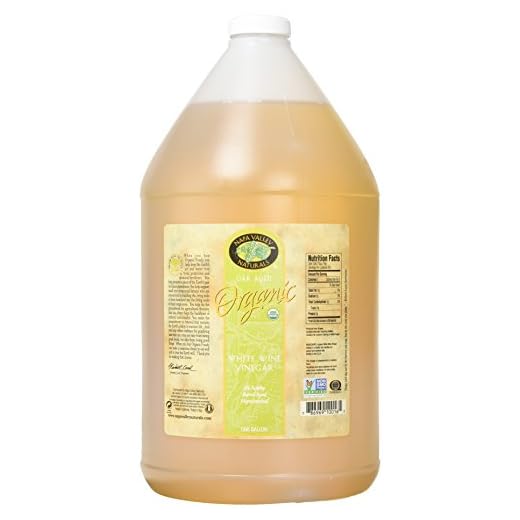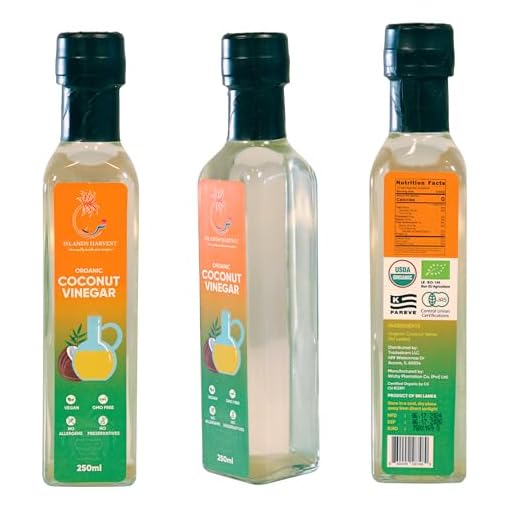

Yes, the product in question can be permissible depending on its origin and production methods. It’s crucial to verify that the fermentation process does not involve any forbidden substances or practices. Check the label for any signs of additional alcohol or non-compliant ingredients.
When assessing the acceptability of this condiment, consider brands that explicitly state their compliance with dietary laws. Many manufacturers offer options that are made from pure, natural ingredients without any additives that could compromise their status.
For those looking to incorporate this tangy ingredient into their dishes, alternatives such as apple cider variety or those made from grains also provide excellent flavor profiles. Always prioritize products with clear labeling and certifications to ensure they align with your dietary principles.
Is White Wine Vinegar Halal
Using this type of acid in cooking can be acceptable, provided it is derived from a source that meets Islamic dietary laws. The fermentation process typically transforms the alcohol into acetic acid, which is non-intoxicating. However, the original source of the alcohol is crucial to determine its permissibility.
It’s advisable to look for products explicitly labeled as alcohol-free to ensure compliance with dietary restrictions. Always check the ingredient list for any additives that may not align with halal standards. When in doubt, consulting a knowledgeable authority in your community can provide clarity.
For those seeking alternatives, consider using apple cider or rice vinegar. Both options lend a similar acidity while aligning with halal requirements. This approach not only maintains the desired flavor profile but also ensures adherence to dietary principles.
Understanding the Ingredients of White Wine Vinegar
To determine the suitability of this fermented product, it’s essential to examine its components. The primary ingredient is typically derived from the fermentation of grape juice. This process involves converting sugars into alcohol, followed by the transformation of that alcohol into acetic acid through the action of bacteria.
Key Ingredients
- Grapes: The base for the fermentation process, sourced from various grape varieties.
- Acetic Acid Bacteria: Naturally occurring microorganisms that convert alcohol into acetic acid.
- Water: Often added to dilute the acidity, making it more palatable for culinary uses.
- Preservatives: Some brands may include sulfites to maintain freshness and prevent spoilage.
Potential Additives
- Flavoring Agents: In some cases, additional herbs or spices might be included for enhanced flavor.
- Coloring Agents: Certain producers may add coloring to achieve a consistent appearance.
When selecting a product, it’s wise to check the label for any non-standard additives or flavorings that could affect its compatibility with dietary restrictions. For those who prioritize natural ingredients, it’s advisable to choose options labeled as organic or artisan-crafted.
Understanding these elements helps in making informed choices regarding the use of this acidic condiment in your culinary practices.
Analyzing the Fermentation Process for Halal Compliance
To determine the acceptability of certain fermented products, it’s vital to scrutinize the fermentation process itself. The transformation of sugars into acids, gases, or alcohol by microorganisms must be considered carefully.
In the case of fermentation involving grapes, the initial stages involve natural sugars being converted into alcohol. This is typically followed by a secondary fermentation process, where acetic acid bacteria convert alcohol into acetic acid, resulting in a sour liquid. To ensure compliance with religious dietary laws, the following factors should be evaluated:
| Factor | Details |
|---|---|
| Source of Ingredients | Verify that the fermentation begins with ingredients derived from permissible sources. Any contaminants or additives must also meet compliance. |
| Microorganisms Used | Ensure that all bacteria or yeasts involved in fermentation are free from any non-compliant elements. This includes checking for animal-derived cultures. |
| Alcohol Content | Monitor the alcohol levels during fermentation. If the final product contains any significant alcohol, it may not be suitable for consumption. |
| Processing Methods | Investigate if any processing methods introduce harmful substances or non-compliant additives during or after fermentation. |
By examining these aspects, one can ascertain whether the end product aligns with dietary principles. It is essential to source ingredients responsibly and verify the processes involved. This diligence ensures that the final product adheres to necessary standards, providing peace of mind for consumers.
Exploring Alternatives to White Wine Vinegar in Cooking
For those seeking suitable substitutes in cuisine, I recommend using apple cider or rice acidity as excellent alternatives. Both options offer a tangy flavor profile that can enhance your dishes without compromising dietary requirements.
Apple cider acidity brings a fruity note and works particularly well in salad dressings and marinades. It pairs seamlessly with leafy greens and roasted vegetables. To use, simply substitute it in a 1:1 ratio for the original ingredient.
Rice acidity, on the other hand, has a milder taste and is ideal for Asian cuisines. It complements stir-fries and sushi rice beautifully. Again, a direct 1:1 substitution is advisable for consistency in flavor.
For a unique twist, consider using lemon or lime juice. These citrus options add brightness and acidity, making them perfect for seafood dishes or as a finishing touch on grilled meats. Depending on the dish, you might adjust the quantity to balance the acidity level.
Lastly, for those looking for a bit of sweetness, malt acidity can be a suitable choice. It’s particularly good in barbecue sauces or marinades, providing a rich depth of flavor. Adjust the quantity based on your taste preference, as its sweetness can vary.
Experimenting with these alternatives not only expands your culinary repertoire but also ensures that your cooking aligns with your dietary practices while maintaining delicious flavors.
Checking Certifications and Labels for Assurance
Always look for certification labels from recognized authorities when assessing products for compliance. These labels indicate that the manufacturer has adhered to the guidelines set by relevant certifying bodies, ensuring that the product meets specific dietary standards. Certifications such as “Certified Organic” or “Non-GMO” may not directly verify compliance, but they reflect a commitment to quality and transparency.
Examine the product packaging closely for any seals or symbols that attest to its compliance with dietary laws. Many brands are transparent about their sourcing and production methods, which can provide reassurance. If you’re uncertain, contacting the manufacturer directly can yield clarity regarding their processes and compliance measures.
Researching Brands and Manufacturers
Investigate the brands you trust and their practices. Established companies often have a history of adhering to dietary guidelines. Look for reviews or testimonials from consumers who prioritize similar dietary needs. Engaging with community forums or groups can also provide insights into which brands are considered reliable.
Utilizing Resources for Verification
Online resources and databases can help you cross-check certifications. Websites dedicated to dietary compliance often maintain up-to-date lists of products and manufacturers that meet specific criteria. This can save time and enhance your confidence in the choices you make. For instance, if you’re interested in photography while exploring culinary options, you might want to check out the best aps c sensor mirrorless camera for capturing beautiful food presentations.
Consulting Religious Authorities on Vinegar Consumption
Engaging with religious authorities is crucial for individuals seeking clarity on the permissibility of consuming certain acidic condiments derived from fermented sources. Direct inquiries to local scholars or organizations specializing in dietary laws can provide tailored guidance.
Key Questions to Consider
When consulting with religious leaders, focus on specific questions related to the production process and the ingredients used. Inquire about the source of the base material and whether any alcohol is present in the final product, as this significantly impacts the ruling.
Documentation and Verification
Request any written opinions or fatwas that address your concerns. Authorities often have resources or publications that clarify their stance on various food items, including those that may contain fermented components. Cross-referencing these documents with reliable halal certification bodies can further ensure that your selections align with dietary principles.
Practical Tips for Using Acetic Acid in Diets
Incorporate alternatives like apple cider or rice-based acetic acid to enhance flavors without compromising your dietary guidelines.
Flavor Pairing Strategies
- Use fruit-based acids to brighten salads and marinades.
- Pair rice vinegar with Asian dishes for a complementary taste.
- Incorporate balsamic varieties for rich, sweet notes in dressings.
Storage and Usage Guidelines
- Store all types of acetic acid in a cool, dark place to maintain quality.
- Always check expiration dates to ensure freshness and safety.
- Use small amounts, as they can significantly alter the flavor profile of dishes.
Experiment with different types to find what suits your palate best while adhering to your dietary practices.







